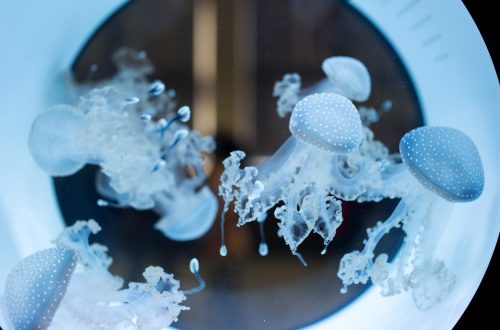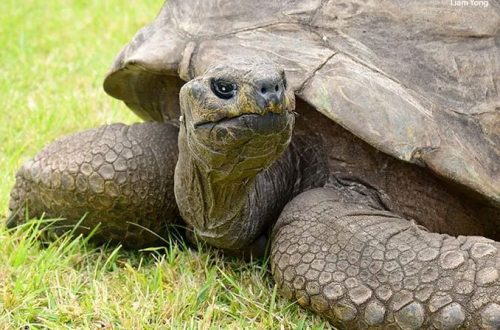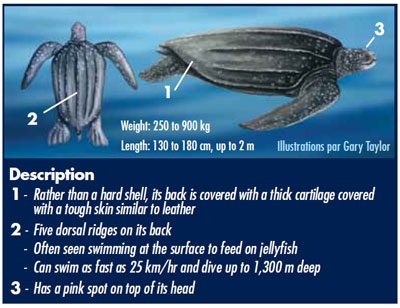
Leatherback turtle loot – description with photos
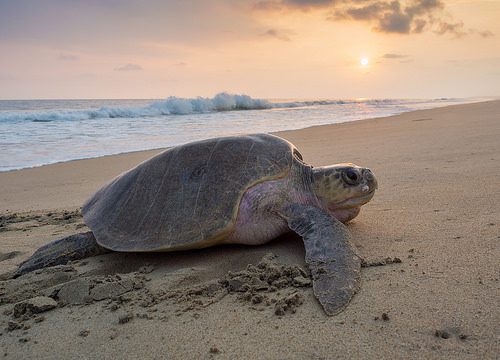
The leatherback turtle, or loot, is the last surviving species on the planet from its family. It is the fourth largest reptile in the world, and the largest known tortoise and the fastest swimmer.
The species is under the protection of the IUCN, listed on the pages of the Red Book in the status of “critically endangered” under the category of vulnerable species. According to an international organization, in a short period of time, the population has decreased by 94%.
Contents
Appearance and anatomy
An adult leatherback turtle reaches an average of 1,5 – 2 meters in length, with a weight of 600 kg they form a massive figure. The skin of the loot is dark shades of gray, or black, often with scatterings of white spots. The front flippers usually grow up to 3 – 3,6 m in span, they help the turtle to develop speed. Rear – more than half as long, used as a steering wheel. There are no claws on the limbs. On a large head, nostrils, small eyes and uneven edges of the ramfoteka are distinguishable.
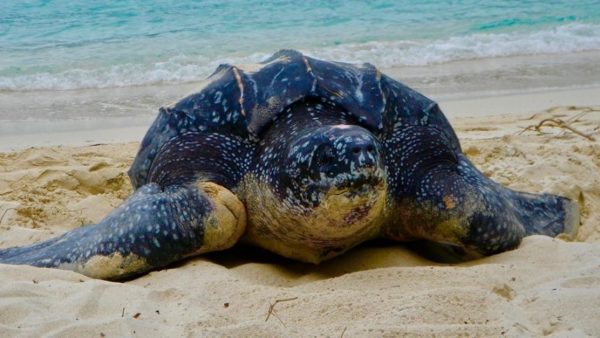
The shell of a leatherback turtle is strikingly different in structure from other species. It is separated from the skeleton of the animal and consists of small bone plates connected to each other. The largest of them form 7 longitudinal ridges on the back of the reptile. The lower, more vulnerable part of the shell is crossed by five of the same ridges. There are no horny scutes; instead, bone plates covered with thick skin are located in a mosaic order. The heart-shaped carapace in males is more narrowed in the back than in females.
The mouth of a leatherback turtle is equipped with hard horny growths on the outside. The upper jaw has one large tooth on each side. The sharp edges of the ramfoteka replace the animal’s teeth.
Inside the reptile’s mouth is covered with spikes, the ends of which are directed towards the pharynx. They are located over the entire surface of the esophagus, from the palate to the intestines. Like teeth, the leatherback turtle does not use them. The animal swallows prey without chewing. The spikes prevent the prey from escaping, while at the same time facilitating its progress through the alimentary tract.
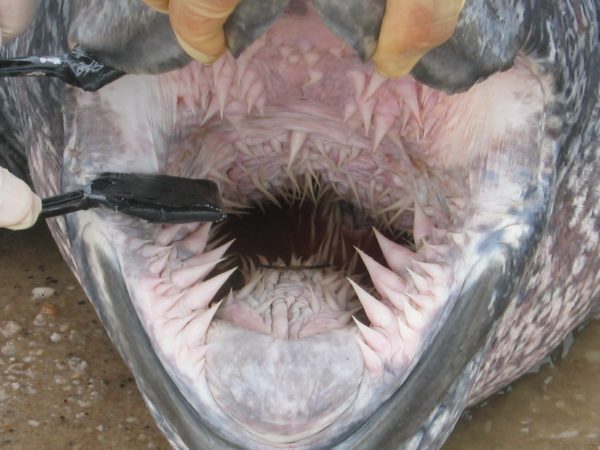
Habitat
Loot turtles can be found all over the world from Alaska to New Zealand. Reptiles live in the waters of the Pacific, Indian and Atlantic oceans. Several individuals have been seen off the Kuril Islands, in the southern part of the Sea of Japan and in the Bering Sea. The reptile spends most of its life in the water.
3 large isolated populations are known:
- Atlantic
- Eastern Pacific;
- western pacific.
During the breeding season, the animal can be caught on land at night. Reptiles tend to return to their usual places every 2-3 years to lay their eggs.
On the shores of the Ceylon Islands, the leatherback turtle can be seen in May-June. From May to August, the animal gets out on land near the Caribbean Sea, the coast of the Malay Islands – from May to September.
The life of a leatherback turtle
Leatherback turtles are born no larger than the size of the palm of your hand. They can be recognized among other species by the description of adult loot. The front flippers of newly hatched individuals are longer than the entire body. Young people live in the upper layers of the ocean, feeding mainly on plankton. Adult animals can dive to a depth of 1500 m.
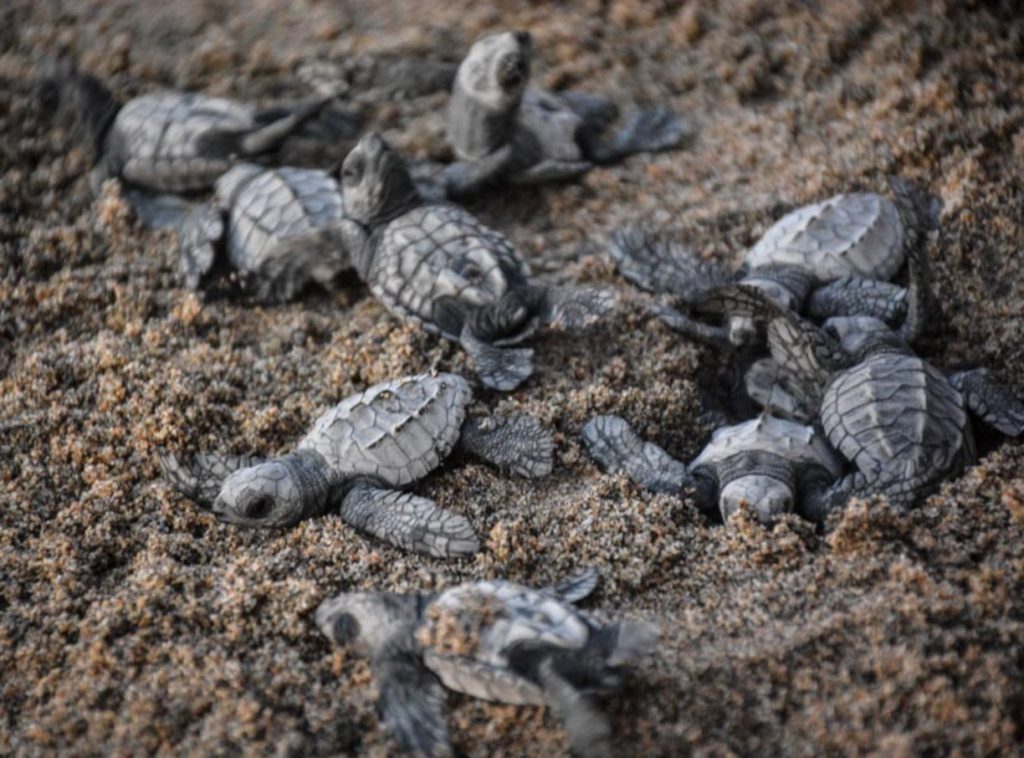
In a year, the turtle is gaining about 20 cm in height. An individual reaches puberty by the age of 20. The average life expectancy is 50 years.
The giant tortoise maintains round-the-clock activity, but appears on the shore only after dark. Agile and energetic underwater, she is able to cover impressive distances and actively travels throughout her life.
Much of the activity of the loot is devoted to the extraction of food. The leatherback turtle has an increased appetite. The basis of the diet is jellyfish, their loot absorbs on the go, without reducing speed. The reptile is not averse to eating fish, mollusks, crustaceans, algae and small cephalopods.
An adult leatherback turtle looks imposing, wishing to turn it into a dinner in the marine environment is rare. When necessary, she is able to defend herself fiercely. The structure of the body does not allow the reptile to hide its head under the shell. Agile in water, the animal runs away, or attacks the enemy with massive flippers and powerful jaws.
Loot lives apart from other turtles. A single meeting with a male is enough for a female to carry out viable clutches for several years. The breeding season is usually in the spring. Turtles mate in the water. Animals do not form pairs and do not care about the fate of their offspring.
For laying eggs, the leatherback turtle chooses steep banks near deep places, without an abundance of coral reefs. During the night tides, she gets out on a sandy beach and looks for a favorable place. The reptile prefers wet sand, out of reach of the surf. To protect eggs from predators, she digs holes 100-120 cm deep.
Loot lays 30 – 130 eggs, in the form of balls with a diameter of 6 cm. Usually the number is close to 80. Approximately 75% of them will split healthy baby turtles in 2 months. After the last egg descends into the makeshift nest, the animal digs in a hole and carefully compacts the sand from above to protect it from small predators.
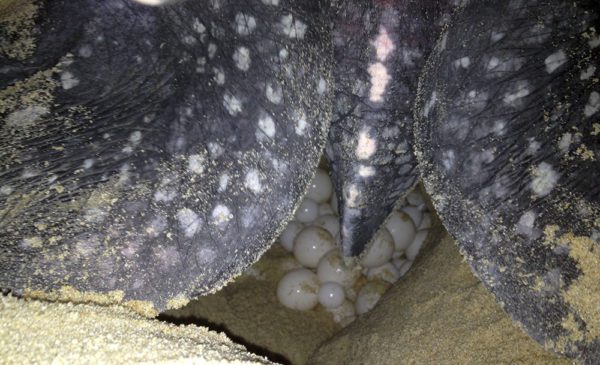 About 10 days pass between clutches of one individual. The leatherback turtle lays eggs 3-4 times a year. According to statistics, out of 10 young turtles, four make it to the water. Small reptiles are not averse to eating large birds and coastal inhabitants. As long as young people do not have an impressive size, they are vulnerable. Some of the survivors become prey for the predators of the oceans. Therefore, with a high fecundity of the species, their numbers are not high.
About 10 days pass between clutches of one individual. The leatherback turtle lays eggs 3-4 times a year. According to statistics, out of 10 young turtles, four make it to the water. Small reptiles are not averse to eating large birds and coastal inhabitants. As long as young people do not have an impressive size, they are vulnerable. Some of the survivors become prey for the predators of the oceans. Therefore, with a high fecundity of the species, their numbers are not high.
Interesting Facts
It is known that the differences between the leatherback and other types of turtles originated in the Triassic period of the Mesozoic era. Evolution sent them along different turns of development, and loot is the only surviving representative of this branch. Therefore, interesting facts about loot are of high interest for research.
The leatherback turtle entered the Guinness Book of Records three times in the following categories:
- the fastest sea turtle;
- the biggest turtle;
- best diver.
Turtle found on the west coast of Wales. The reptile was 2,91 m long and 2,77 m wide and weighed 916 kg. In the Fiji Islands, the leatherback turtle is a symbol of speed. Also, animals are famous for their high navigational features.

With an impressive body size, the leatherback turtle’s metabolism is three times higher than that of other species of its weight category. It can maintain body temperature above ambient for longer. This is facilitated by the high appetite of the animal and the subcutaneous fat layer. The feature allows the turtle to survive in cold water, up to 12 ° C.
The leatherback turtle is active 24 hours a day. In her daily routine, rest takes less than 1% of the total time. Most of the activity is hunting. The daily diet of a reptile is 75% of the mass of the animal.
The calorie content of the daily diet of loot can exceed the norm necessary for life by 7 times.
One of the factors in the decline in the number of turtles is the presence of plastic bags in sea waters. They seem to reptiles like jellyfish. The ingested debris is not processed by the digestive system. The stalactite spikes prevent the turtle from spitting out the bags, and they accumulate in the stomach.
According to the Ames Research Center at the University of Massachusetts, the loot is the most migratory turtle. It travels thousands of kilometers between hunting-friendly regions and laying grounds. According to scientists, animals can navigate the terrain using the planet’s magnetic field.
The facts of the return of turtles to the shores of birth after decades are known.
In February 1862, fishermen saw a leatherback turtle off the coast of Tenasserim near the mouth of the Ouyu River. In an effort to get a rare trophy, people attacked a reptile. The strength of six men was not enough to keep the loot in place. Loot managed to drag them all the way to the coastline.
To save the species from extinction, in different countries create protected areas in the nesting areas of females. There are organizations that remove masonry from the natural environment and place it in artificial incubators. Newborn turtles are released into the sea under the supervision of a group of people.
Video: endangered leatherback turtles
Sea leatherback turtle loot
3 (60%) 8 votes




